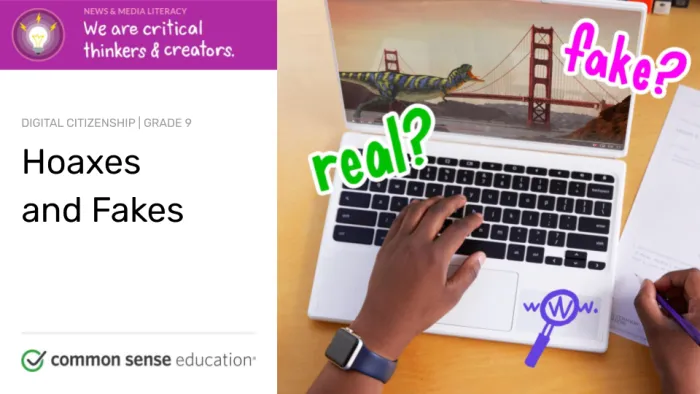Lesson
Hoaxes and Fakes

Grade
9Time
Objectives
- Define "misinformation" and explore the consequences of spreading misinformation online.
- Learn how to use lateral reading as a strategy to verify the accuracy of information online.
- Apply lateral reading to examples of questionable videos to determine their accuracy.
Vocabulary
Standards
Current Events Connection!
Use this lesson to help students understand why and how misinformation is spread. By recognizing these tactics, students can become better consumers of political information, empowering them to make informed decisions in the elections to come.
Additional Resources
This lesson is an introduction to the concept of lateral reading for your students. For more information on lateral reading, we recommend these resources:
Lateral Reading: Reading Less and Learning More When Evaluating Digital Information. Sam Wineberg & Sarah McGrew, Stanford History Education Group, Sept 2017
Want to Be a Better Online Sleuth? Learn to Read Webpages Like a Fact-Checker. Daniel Funke, Poynter, 10/16/2017
Web Literacy for Fact-Checkers - Four Moves. Mike Caulfield (Washington State University), 2017
For related lessons, check out the Essential News & Media Literacy Skills for Students lesson collection.








